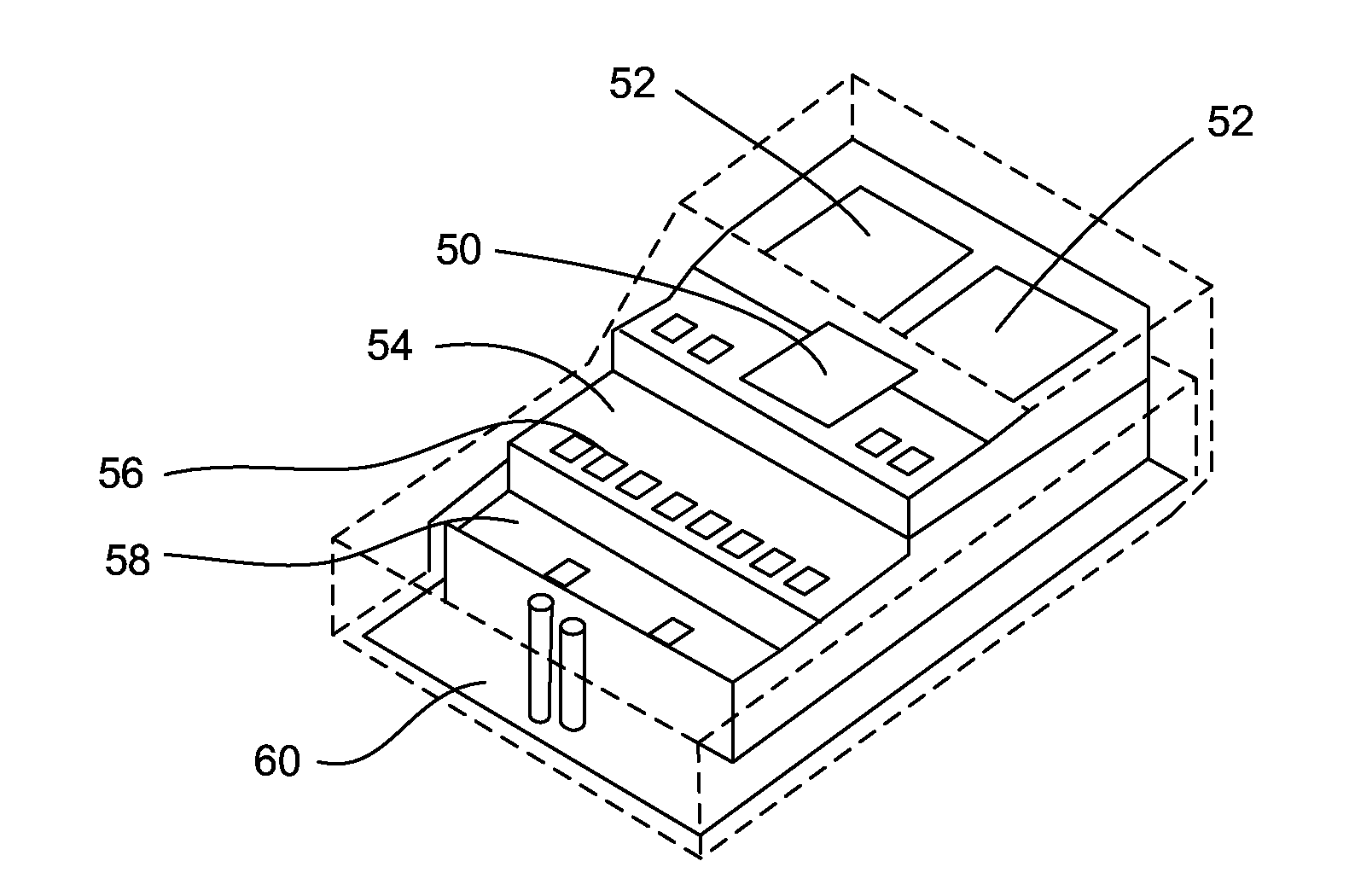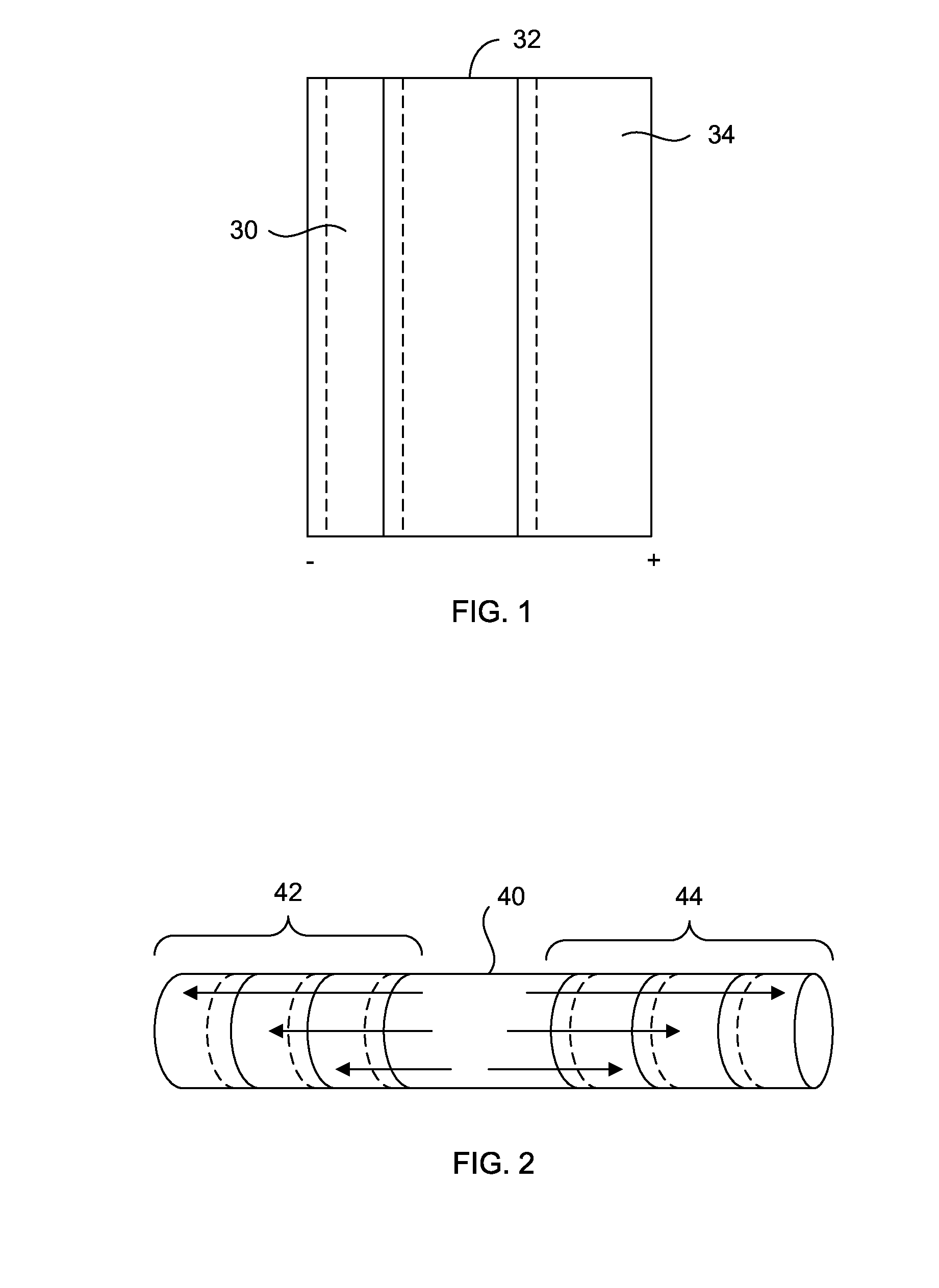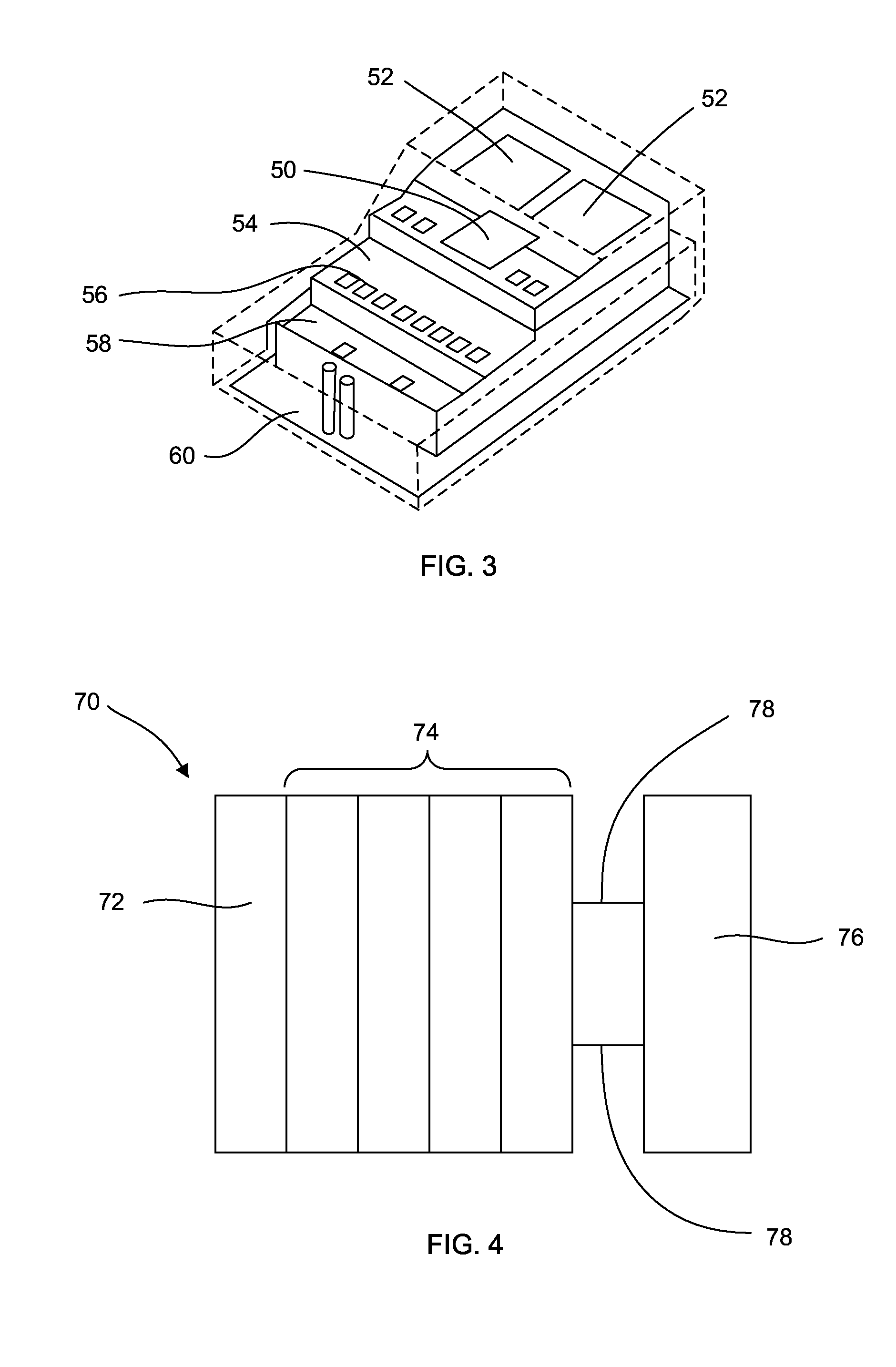Small form factor betavoltaic battery for medical implants
a betavoltaic battery, small technology, applied in batteries, electrochemical generators, therapy, etc., can solve the problems of reducing the size of these pacemakers and other medical devices, limiting the technology of battery technology, and reducing the size of the battery
- Summary
- Abstract
- Description
- Claims
- Application Information
AI Technical Summary
Benefits of technology
Problems solved by technology
Method used
Image
Examples
Embodiment Construction
[0017]In the teachings of the various embodiments of this invention, miniature betavoltaic power sources (with dimensions ranging from about a cubic millimeter to approximately 0.5 cubic centimeters) are constructed with energy densities approximately ranging from about 1 watt-hour per cubic centimeter to about 500 watt-hours per cubic centimeter. The energy density for a betavoltaic power source is calculated by integrating the betavoltaic device's power density over the medical device's useful life (e.g. 10 years for pacemakers). Betavoltaic power sources can be constructed in cubic millimeter volume spaces without affecting the energy density; this is unlike conventional chemical battery technology where practical limitations exist in constructing micro-scaled cathodes, anodes, and liquid electrolyte volumes without incurring losses in energy density.
[0018]In the case of promethium the inventor has discovered that the removal of the Pm-146 component is an important factor in redu...
PUM
| Property | Measurement | Unit |
|---|---|---|
| volume | aaaaa | aaaaa |
| volume | aaaaa | aaaaa |
| thick | aaaaa | aaaaa |
Abstract
Description
Claims
Application Information
 Login to View More
Login to View More - R&D
- Intellectual Property
- Life Sciences
- Materials
- Tech Scout
- Unparalleled Data Quality
- Higher Quality Content
- 60% Fewer Hallucinations
Browse by: Latest US Patents, China's latest patents, Technical Efficacy Thesaurus, Application Domain, Technology Topic, Popular Technical Reports.
© 2025 PatSnap. All rights reserved.Legal|Privacy policy|Modern Slavery Act Transparency Statement|Sitemap|About US| Contact US: help@patsnap.com



